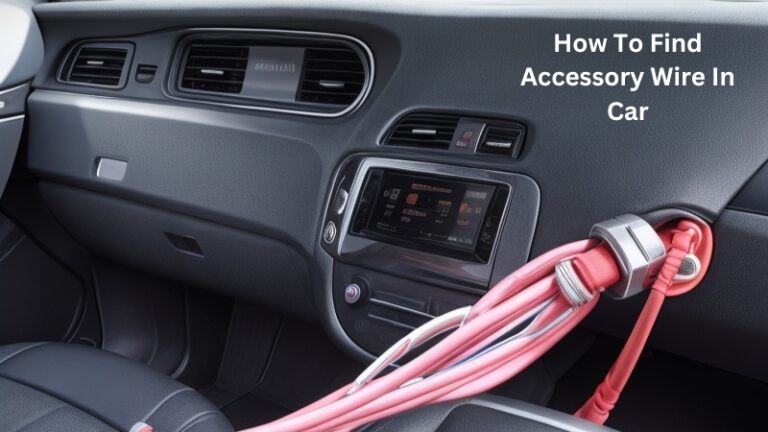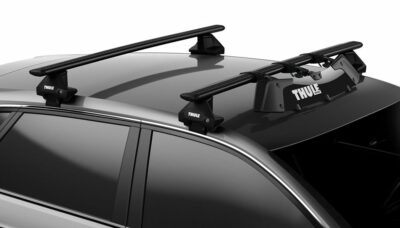How To Test Your Car Cigarette Lighter Or Accessory Socket
Today we discuss Car Cigarette Lighter Or Accessory Socket. In today’s fast-paced world, our cars have become more than just a means of transportation. They are our personal sanctuaries, our mobile offices, and even our entertainment hubs. But what happens when the accessory that powers our devices, charges our phones and keeps us connected suddenly stops working? Frustration sets in, and we find ourselves longing for a solution. That’s where understanding how to test your car’s cigarette lighter or accessory socket becomes essential knowledge for every driver.
In this guide, we will explore the step-by-step process of testing your car’s cigarette lighter or accessory socket, ensuring that you can diagnose and fix any issues that may arise. Whether it’s a faulty connection, a blown fuse, or a deeper electrical problem, we will empower you with the knowledge and skills to troubleshoot and resolve the issue. So, buckle up, and let’s dive into the world of car accessories, as we uncover the secrets to keeping your devices powered and your journey uninterrupted.
:max_bytes(150000):strip_icc()/cigarettelightersocketdoesntworkobjectinside-5bb3cac546e0fb002611ff4d.jpg)
How to Test Your Car Cigarette Lighter or Accessory Socket
Welcome to our step-by-step guide on how to test your car’s cigarette lighter or accessory socket. Whether you’re experiencing issues with your car charger or simply want to ensure everything is in working order, this article will provide you with all the information you need to effectively test your car’s cigarette lighter or accessory socket. With our easy-to-follow instructions, you’ll be able to identify and solve any potential problems, ensuring a smooth and hassle-free driving experience.
Step 1: Prepare the Necessary Tools
Before starting the testing process, it’s important to gather the necessary tools. You’ll need a digital multimeter, which can be easily purchased at most automotive stores or online. Additionally, make sure you have a pair of safety gloves and safety goggles to protect yourself during the testing process.
Ensure your car is turned off and the keys are removed from the ignition to prevent any electrical mishaps. It’s always better to be safe than sorry when dealing with car electronics.
Step 2: Locate the Cigarette Lighter or Accessory Socket
The next step is to locate the cigarette lighter or accessory socket in your car. In most vehicles, it is situated near the center console, below the dashboard, or inside the storage compartment. If you’re unsure, consult your car’s owner manual for the exact location.
Once you’ve located the socket, check for any visible damage or debris that may be obstructing it. It’s important to ensure the socket is clean and free from any obstructions before proceeding with the testing process.
Step 3: Test the Voltage
Now it’s time to test the voltage of the cigarette lighter or accessory socket. Put on your safety gloves and goggles before proceeding.
Take your digital multimeter and set it to DC voltage mode. Insert the multimeter’s positive probe into the center contact of the socket and the negative probe to the outer metal ring. Ensure a secure connection between the probes and the socket.
Once the probes are securely connected, turn on your car’s ignition without starting the engine. The multimeter should display a voltage reading. Ideally, it should be around 12 volts. If the reading is significantly lower or shows no voltage at all, there may be an issue with the socket’s wiring or fuse.
Step 4: Check the Fuse
If you obtained a lower voltage reading or no voltage reading at all in the previous step, there may be a blown fuse affecting the cigarette lighter or accessory socket.
Refer to your car’s owner manual to locate the fuse box. Once located, identify the fuse corresponding to the cigarette lighter or accessory socket. Use a fuse tester or visually inspect the fuse to check for any signs of damage or a blown fuse.
If the fuse is indeed blown, replace it with a new fuse of the same rating. Make sure to follow the manufacturer’s instructions and use the correct type of fuse to avoid any complications.
Step 5: Retest the Voltage
After replacing the fuse, retest the voltage in the cigarette lighter or accessory socket using the same method described in step 3. If the voltage reading is now within the expected range, congratulations! Your socket is working properly.
If, however, the voltage reading remains low or nonexistent, it may indicate a more serious electrical issue. In this case, it is recommended to consult a professional mechanic or an automotive electrician to further diagnose and fix the problem.
Step 6: Clean and Maintain the Socket
To ensure the longevity of your car’s cigarette lighter or accessory socket, it’s important to keep it clean and well-maintained. Regularly remove any debris or foreign objects that may find their way into the socket. Additionally, consider using a specialized cleaner to remove any built-up dirt or grime.
Remember, a clean socket not only improves its functionality but also reduces the risk of electrical problems in the future.
Step 7: Test Accessories
Once you’ve successfully tested and confirmed the functionality of your car’s cigarette lighter or accessory socket, it’s a good idea to test any accessories you intend to use with it. This will ensure they also work as expected and don’t cause any issues.
Connect your desired accessory, be it a car charger, GPS device, or any other compatible gadget, to the socket and check if it functions correctly. If the accessory fails to work, it may indicate a problem with the accessory itself rather than the socket.
Step 8: Regular Maintenance
Lastly, remember to periodically repeat the testing process and perform regular maintenance on your car’s cigarette lighter or accessory socket. This will help you identify and address any potential issues before they escalate and ensure your socket continues to function optimally.
By following these simple steps and taking proper care of your car’s cigarette lighter or accessory socket, you can enjoy a reliable and convenient power source for all your electronic devices while on the road.
Faqs for Car Cigarette Lighter Or Accessory Socket:
To test if your car cigarette lighter is working, you can follow these steps. First, make sure your car ignition is turned on. Then, plug in a device that you know is functional, such as a phone charger or a portable vacuum cleaner, into the cigarette lighter socket. If the device starts working or if the indicator light on the charger turns on, it indicates that your cigarette lighter is functioning properly.
If the device doesn’t work, it could be due to a blown fuse. Check the fuse box of your car and look for the fuse associated with the cigarette lighter. If the fuse is blown, replace it with a new one of the same amperage. If the fuse replacement doesn’t solve the issue, there might be a wiring problem, and it’s best to consult a professional mechanic.
Yes, you can use a multimeter to test your car’s accessory socket. Start by setting your multimeter to measure DC voltage. Then, insert the multimeter’s positive probe (red) into the center contact of the accessory socket and the negative probe (black) into the metal frame of the socket. If the multimeter displays a voltage reading, it means the accessory socket is working correctly.
If the multimeter doesn’t show any voltage reading, it could indicate a blown fuse, a wiring problem, or a faulty socket. Again, checking the fuse box and replacing the fuse if necessary is a good first step. If that doesn’t solve the issue, it’s recommended to seek professional assistance to diagnose and fix the problem.
If your car cigarette lighter isn’t providing power, here are a few things you can try. First, check if there is any debris or dirt inside the socket. Use a small brush or compressed air to clean it out. Sometimes, dirt can block the connection and prevent the lighter from working.
If cleaning the socket doesn’t solve the problem, check the fuse associated with the cigarette lighter in the fuse box. A blown fuse is a common cause of a non-working cigarette lighter. Replace the fuse with a new one of the same amperage if necessary. If the fuse replacement doesn’t fix the issue, it’s recommended to consult a professional to diagnose and repair any wiring or socket problems.
Yes, the cigarette lighter socket, also known as the accessory socket, can be used for various devices other than cigarette lighters. Modern car accessory sockets are designed to provide power for a range of devices, including phone chargers, GPS units, dash cams, and portable electronic devices.
However, it’s essential to check the power requirements of the device you intend to use. Ensure that the power rating of the device is within the limits of the accessory socket. Using a device with a higher power rating may overload the socket and cause damage. If in doubt, consult the device’s manual or seek professional advice.
Leaving a device plugged into the car cigarette lighter overnight is generally not recommended. When the ignition is off, the cigarette lighter socket is usually not powered, which means the device won’t charge or function. However, some cars have accessory sockets that remain active even when the ignition is off, so it’s essential to check your car’s specifications.
Additionally, leaving a device plugged in can drain the car’s battery over time. If you need to charge a device overnight, it’s better to use a dedicated USB charger plugged into a power outlet that is not connected to the car’s battery. This way, you can avoid any potential battery drain or electrical issues.
conclusion:
testing your car cigarette lighter or accessory socket is a simple yet crucial task that every car owner should be familiar with. By following the step-by-step guide outlined in this article, you can easily determine if your cigarette lighter or accessory socket is functioning properly or if it requires further attention. Remember to always prioritize safety and use the appropriate tools when conducting any electrical tests.
By regularly testing your car’s cigarette lighter or accessory socket, you can ensure that it remains a reliable power source for your electronic devices on the go. This not only saves you from the inconvenience of a malfunctioning socket but also provides peace of mind knowing that you can rely on your car’s electrical system. So, take a few minutes to inspect and test your car’s cigarette lighter or accessory socket today, and drive with confidence knowing that you are well-prepared for any charging needs that arise during your journeys.






